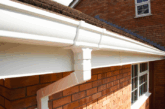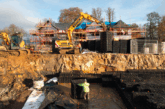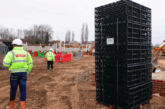
Stuart Fairlie, managing director at Elmhurst Energy, explores how housebuilders can address the growing risk of overheating, designing homes that are resilient enough to withstand future climate change.
Did you know that a bedroom is at overheating risk if it spends more than 1% of annual sleeping hours at over 26 degrees? That’s only 3-4 nights per year.
It means a significant number of UK homes are already experiencing – or highly susceptible to – overheating in the summer. The problem is going to become more common as the climate becomes more intense, with heatwave temperatures becoming a summertime norm. According to the NHS, more people than usual get seriously ill or die during heatwaves and vulnerable groups, like the elderly, babies and those with long-term health conditions, are particularly at risk. With the government still targeting delivery of 1.5 million new homes by 2029, housebuilders must consider ways to mitigate the climate of the future, now, while meeting requirements of Building Regulations Part O on overheating.
Shading spaces
One of the simplest ways to keep heat out of a home is to prevent solar gain in the first place. External shutters are very effective in keeping internal spaces cool. While often thought of as a decorative or privacy feature, external shutters are a proven measure for heat control. By blocking out the sun, they not only create shade within a room but also reduce the outdoor air temperature between the shutter and the window. This creates a buffer zone, preventing warmth from being transferred into the room.
In other hot climates, like the Mediterranean, external shutters and other shading features are considered essential. Unlike internal blinds or curtains, which only trap the heat after it has already entered the building, external shading stops much of the heat from ever getting inside.
But in the UK, government figures suggest fewer than 11% of households have them installed. As summers get hotter, we may see external shading shift from an optional feature to a mainstream necessity. For housebuilders, integrating such measures into design can futureproof newbuilds and reduce the need for retrofit later.
Utilising natural ventilation
Alongside the 1.5 million new homes, the UK is also committed to achieving carbon net zero by 2050. This means as the temperature keeps rising, we can’t always rely on energy-intensive mechanical cooling such as air conditioning. To reduce the demand on a rapidly decarbonising grid, housebuilders should also explore passive design solutions to maximise natural airflow.
Avoiding windows with small openings, or devices that restrict the opening angle can help significantly with air flow. When homes are designed to enable cross ventilation, occupants can open windows on opposite sides of a building to create a cool breeze.
Positioning main bedrooms and living spaces on the north or east facing sides of the home can also help avoid heat caused by solar gain. These rooms will warm more slowly during the day and are quickest to cool at night.
Insulation
It might sound counterintuitive, but scientists have found solid wall insulation can protect a home from getting too hot as it prevents heat from the outside getting in. Insulation is often associated with winter heat savings, but it can act as a barrier against external heat, too.’Research from Leeds Sustainability Institute at Leeds Beckett University highlights the importance of insulating lofts and roof spaces, which are in direct sunlight and therefore at risk of overheating.
Poorly insulated lofts can become unbearably hot in the summer, transferring heat to the rest of the home. By ensuring these areas are properly insulated and ventilated, developers can help stabilise indoor temperatures year-round. Thermal imaging surveys can be used to identify weak spots where insulation may be missing or underperforming. By addressing these gaps during construction, developers can avoid future remediation work and reassure buyers of a home’s long-term performance.
Only getting warmer
Climate projections indicate that by 2050, the UK is likely to experience more frequent and intense heatwaves. This means that homes will require a combination of shading, ventilation and insulation measures as standard. If passive solutions are not enough, developers may need to integrate mechanical cooling systems like air conditioning. But these will need to be designed with renewable power sources such as solar, so that they don’t underestimate the UK’s decarbonisation goals.
As the summers get warmer, housebuilders must strike a balance between retaining heat in the winter but also allowing heat to escape in the hotter months. Elmhurst’s Overheating Competency Scheme provides energy assessors with the tools to support housebuilders in creating homes that prioritise occupant comfort and safety, both now and in the future.
To learn more about the scheme, visit www.rdr.link/dbg037








